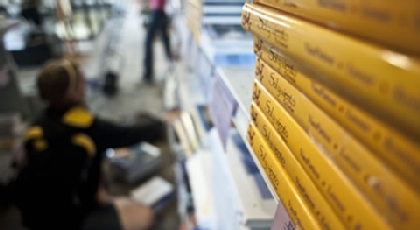New online textbook comparison program offers students a chance to compare, and save
The Garfield Book Company wants students shopping for their books this fall to come to the bookstore site to shop and compare.

The GBC offers text book comparisons.
The GBC has just launched a Website where students can find what textbooks each professor is requiring for their class, and compare how much that book will cost, used or new, at the bookstore, as well as how much it will cost on other sites such as Amazon or Half.
Giving the competition’s prices? Seriously? Matthew Crom, textbook manager of the bookstore, doesn’t think it’s such a crazy idea. He thinks students will quickly warm to the site. Crom thinks that visitors to the Web site will quickly find that the GBC’s prices are competitive.
“We hope to establish our website as the central source of textbook information and the center for any sort of textbook transaction they wish to pursue: purchasing from us, rentals, and peer-peer marketplace transactions will all be an option,” said Kristi Dopp, director of the Garfield Book Company.
The bookstore, which buys thousands of books each year for the students returning for the fall semester, and the again in the spring, will also offer a textbook rental program through Follett rental program, which will also have a link off the GBC main site.
“We will offer many options for students here,” Crom said, as he tested the comparison site recently just before it went live in mid-August. “They can buy a used book, purchase a new book here, or participate through the buyback program.”
Under the buyback program, if a book is a current edition, adopted for an upcoming term at PLU, and the bookstore needs those copies, students can receive up to 50 percent of the new sell price for the book. In other cases, the price is based on the national wholesale demand for the book.
Most of the students begin purchasing their books two weeks before classes start, Crom said. Books range in price from a few bucks, for a used paperback a student might use in a Literature class, to up to $200 for some business or nursing textbooks.
Students who purchase used or new books can participate in the buyback program offered by the bookstore. Students that also purchase a set amount of books at the bookstore will receive gift cards to be used against future purchases.
“It’s a new loyalty program for textbooks,” Crom said. Students will receive a “loyalty card” that will be stamped for every $5 of textbooks they purchase. Once they receive $100 worth of stamps, they’ll receive a $15 gift card.


